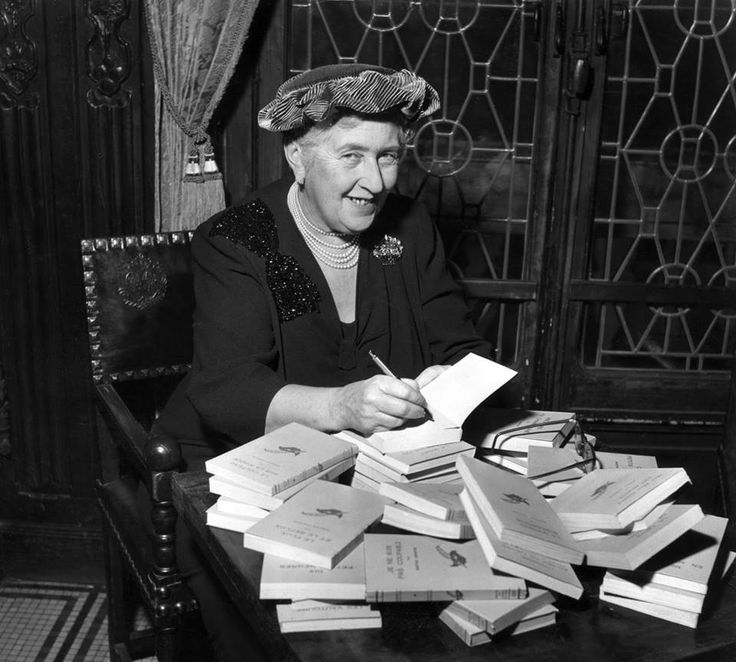 |
| Image from here |
"I suppose without curiosity a man would be a tortoise. Very comfortable life, a tortoise has. Goes to sleep all winter and doesn't eat anything more than grass as far as I know, to live all the summer. Not an interesting life perhaps, but a very peaceful one." - Postern of Fate
The Sum of It
In this finale of the Tommy and Tuppence tales, our favorite bantering couple is in their sixties (aka elderly if you ask Agatha) and have acquired a new house in a cozy little seaside village in which to spend their sunset years. Along with the house, they bought a bunch of the old books in the shelves, as well as a shed full of random junk. As Tuppence is going through all the old books, she finds some strategic underlining that reveals a secret message: Mary Jordan did not die naturally. Clearly our curious friend Tuppence isn't just going to let such a message go, so she and Tommy start poking around their new little town to see if anyone has heard of Mary Jordan, or the little boy who left the cryptic message in his book, Alexander Parkinson. Turns out there are all kinds of rumors about a girl named Mary Jordan going back to WWI, some saying she was a German spy, some saying she was a British spy, all saying she died of accidental poisoning. Tommy and Tuppence have several very repetitive conversations with their neighbors, all of whom seem to have heard of the couple's apparently nationwide fame following their capture of a German spy in the last Tommy and Tuppence tale, N or M, and are very excited to talk about that over and over again.
Tommy eventually starts going through some official channels to obtain information, including Mr. Pikeaway and Mr. Robinson, both of whom featured prominently in the non-Tommy and Tuppence story Passenger to Frankfurt. Meanwhile Tuppence is making the rounds to all the village's oldest inhabitants to see if they know anything useful about Mary Jordan, what she might have been spying about, and what perhaps might be hidden around the house, since so many people seem to think that something spy-related is on their property still. Despite a stated desire to keep their research on the down-low, Tuppence eventually enlists both their elderly gardener Isaac and a huge troop of neighborhood children in helping her track down information, which eventually results in old Isaac getting #MURDERED in Tuppence's own garden shed! There are some mysterious objects in there, including two garden stools in differing shades of blue known apparently as Oxford and Cambridge, as well as a giant wooden rocking horse thing, Mathilda, and a child's toy car, called Truelove for unknown reasons. Tommy and Tuppence narrow their search to these items, but while they're digging around to get close to a clue, someone takes a shot at poor Tuppence from a clump of grass! Their dog Hannibal chases the criminal off, and it takes a little intervention from Mr. Robinson and Mr. Pikeaway to finally clear up who the baddies in town still are.
The YOA Treatment
Alas, guys. As much as I love Tommy and Tuppence -- and YOU KNOW I truly do love them -- this book was pretty bad. All their old fun banter was replaced with deadly dull, amazingly repetitive conversations about not being able to remember things: names, places, nationalities, what a census is, quotes from books, etc., etc. That really took a lot of the wind out of my sails in terms of enjoying their detecting. The same was true of basically every conversation they had with anyone else, child or elderly neighbor, ALL of which consisted of someone trying to remember something that doesn't seem that hard to remember, "Err, she was German. Or maybe Russian. Or was it French?" "Oh yeah I remember who lived there, something like Parks. Or was it Parker? Or maybe Parkinson?" The whole time I'm like IT'S PARKINSON Why are we spending time on this conversation?? It was somewhat frustrating, but I had to remind myself that given that Agatha was getting on in years, this was probably a frustrating experience in her own life too!
Additionally, the mystery here -- who killed a British spy during WWI and what might she have hidden on their property before she was killed like 50 years ago -- was either not sufficiently compelling or not sufficiently established so as to really hold one's interest. I kept forgetting (maybe that was on purpose, in keeping with the book's theme) what Tommy and Tuppence were looking for. I think another thing that I have always loved about all the other Tommy and Tuppence stories has been the fairly rapid pace of the action. While some people prefer Agatha's more intellectual mysteries, like Poirot stories, I've always thought she writes a cracking good thriller, and those have been some of my favorite reads. However, I think in her later years, and this is one of the last three books she wrote, that just wasn't really her speed anymore. Over all, this last Tommy and Tuppence tale was definitely my least favorite of the books about them, and I found myself wishing she had allowed them to stay a little younger as she herself grew old, so that their mysteries would still feel fresh.
We've only got two more books to report on before our Year of Agatha concludes! Stay tuned for Sleeping Murder and Curtain, the last Marple and Poirot books respectively, as well as a post letting you know about the direction we're planning on taking the blog in 2017.
- E.




















